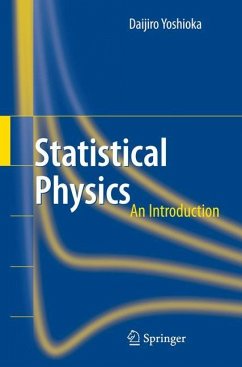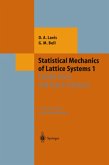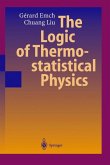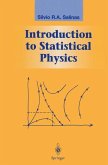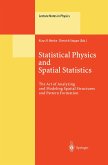A macroscopic system consists of a tremendous number of microscopic atoms and molecules. In thermal equilibrium the state of such a system is uniquely defined, despite the fact that the microscopic particles behave quite randomly. This observation gives rise to the fundamental law of the statistical physics; it allows entropy to be defined and a framework for the theory to be constructed.
The first part of this book explains the essence of statistical physics without going into details such as Liouville's theorem or ergodic theorem, which are difficult for beginners and unnecessary for actual application of the statistical mechanics. In the second part, statistical mechanics ís applied to various systems which look different but have the same mathematical structure. In this way readers can deepen their understanding of statistical physics.
The first part of this book explains the essence of statistical physics without going into details such as Liouville's theorem or ergodic theorem, which are difficult for beginners and unnecessary for actual application of the statistical mechanics. In the second part, statistical mechanics ís applied to various systems which look different but have the same mathematical structure. In this way readers can deepen their understanding of statistical physics.
From the reviews:
"Yoshioka (Univ. of Tokyo) offers an introduction to statistical physics with an emphasis on macroscopic relations. ... Yoshioka writes well, and students will derive a great deal from this text. It might work well as a course supplement of for someone who wants a good introduction to macroscopic studies. Summing Up: Recommended. Upper-division undergraduates." (E. Kincanon, CHOICE, Vol. 44 (10), June, 2007)
"The book is intended as a textbook for undergraduate students, and it is divided into three parts. The first part is devoted to general principles, the second part to elementary investigators and the third part to more advanced topics. ... Finally, the appendix summarizes some mathematical facts used in this book." (Christina Papenfuß, Zentralblatt MATH, Vol. 1129 (7), 2008)
"This accessible text provides a comprehensive and self-contained introduction to the basics of statistical physics for equilibrium states at a level suitable for beginning undergraduate students with no pre-knowledge of statistical physics. ... The beginning student will appreciate the clear and lucid presentation of the subjects discussed. At the end of each chapter problems are given. The book may also serve as a useful guide for teachers of statistical physics." (Oliver Rudolph, Mathematical Reviews, Issue 2009 d)
"Yoshioka (Univ. of Tokyo) offers an introduction to statistical physics with an emphasis on macroscopic relations. ... Yoshioka writes well, and students will derive a great deal from this text. It might work well as a course supplement of for someone who wants a good introduction to macroscopic studies. Summing Up: Recommended. Upper-division undergraduates." (E. Kincanon, CHOICE, Vol. 44 (10), June, 2007)
"The book is intended as a textbook for undergraduate students, and it is divided into three parts. The first part is devoted to general principles, the second part to elementary investigators and the third part to more advanced topics. ... Finally, the appendix summarizes some mathematical facts used in this book." (Christina Papenfuß, Zentralblatt MATH, Vol. 1129 (7), 2008)
"This accessible text provides a comprehensive and self-contained introduction to the basics of statistical physics for equilibrium states at a level suitable for beginning undergraduate students with no pre-knowledge of statistical physics. ... The beginning student will appreciate the clear and lucid presentation of the subjects discussed. At the end of each chapter problems are given. The book may also serve as a useful guide for teachers of statistical physics." (Oliver Rudolph, Mathematical Reviews, Issue 2009 d)

